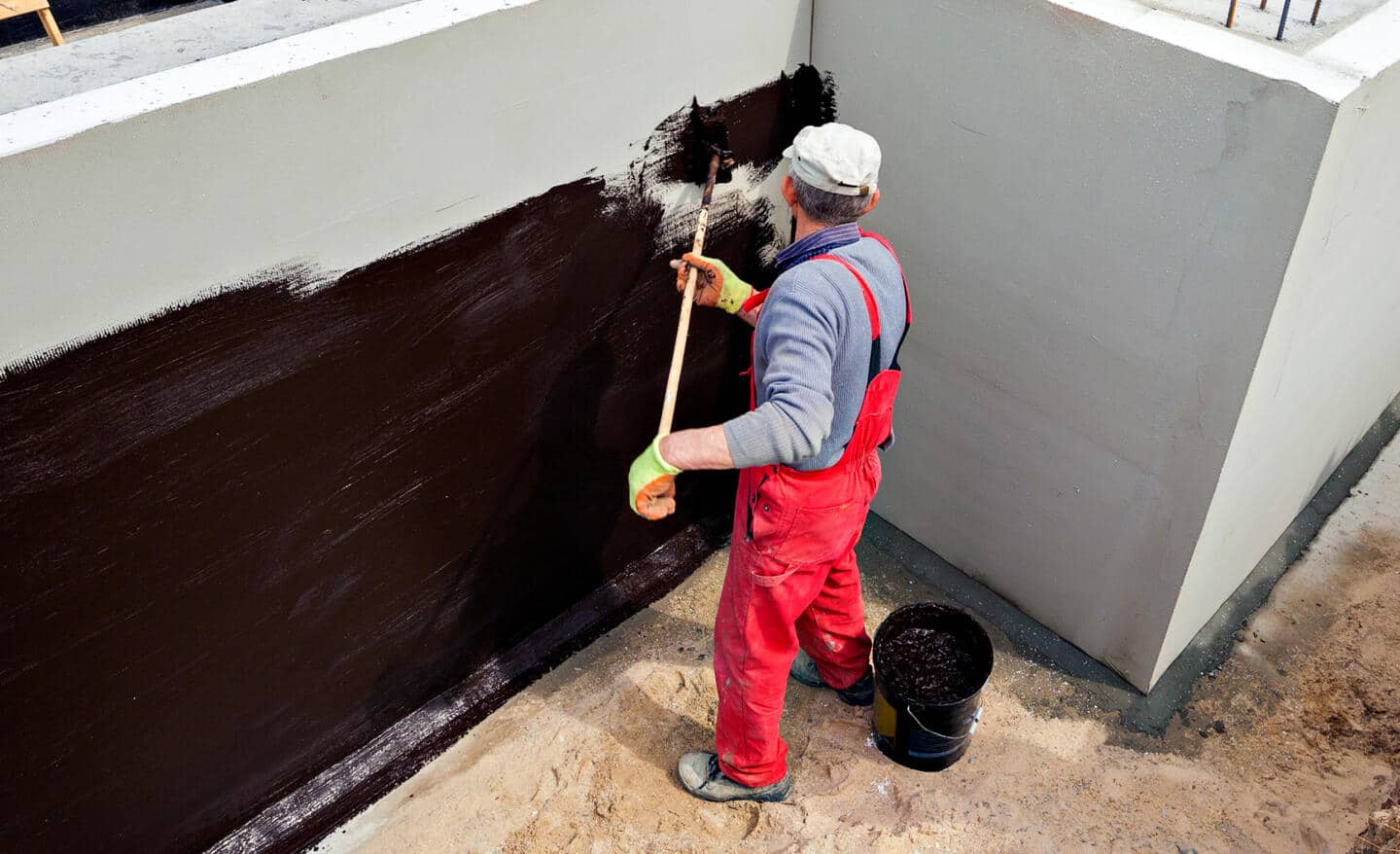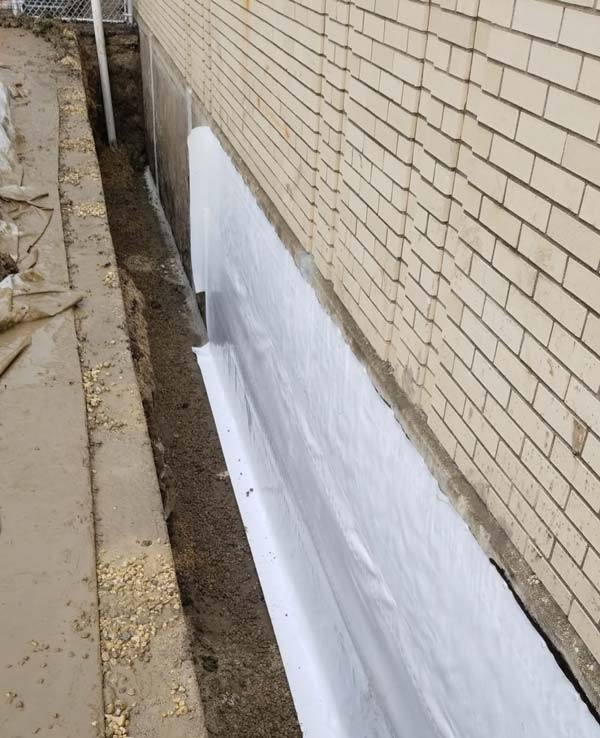Just How Cellar Waterproofing Functions: A Comprehensive Overview for Your Home
Cellar waterproofing is vital for safeguarding homes from water damage. Different techniques exist to deal with wetness concerns, each tailored to particular reasons. Homeowners have to understand these alternatives to choose the very best solution for their demands - Exterior Drainage Solutions. The efficiency of these techniques relies upon the appropriate products and strategies. What are one of the most usual strategies, and just how can they be implemented properly? This guide will explore these crucial aspects
Understanding the Reasons of Cellar Wetness
Although cellars are commonly created to be practical and completely dry areas, they can drop sufferer to wetness due to numerous aspects. One primary cause is inadequate drain around the structure, which can bring about water pooling and infiltration. Furthermore, heavy rainfall or rapid snowmelt can overwhelm drainage systems, aggravating moisture issues. One more considerable variable is the all-natural humidity existing in the ground, which can penetrate with floorings and walls, particularly in older homes with less reliable obstacles. Cracks in the structure might additionally permit water breach, particularly throughout durations of heavy rainfall. Moreover, plumbing leakages within the basement can contribute to moisture build-up, developing an atmosphere for mold and mildew growth. Ultimately, insufficient ventilation can catch moisture, intensifying the general moisture trouble. Recognizing these reasons is vital for home owners looking for reliable remedies to stop basement moisture issues.
Sorts Of Basement Waterproofing Techniques
Basement waterproofing techniques are crucial for shielding homes from moisture damage and preserving a risk-free living environment. These methods can be extensively classified into indoor and external options. Inside waterproofing commonly entails the setup of drain systems, sump pumps, and vapor barriers. These systems work to draw away water far from the basement and avoid moisture from permeating with the walls or floor.On the other hand, outside waterproofing focuses on stopping water from entering the home in the top place. This can consist of excavation around the structure, applying water resistant coverings, and mounting water drainage tiles to redirect water far from the framework. Furthermore, some homeowners might go with a combination of both outside and interior methods to assure thorough security. Ultimately, the selection of waterproofing technique depends on the particular conditions of the home and the level of wetness existing in the basement.
Materials Used in Waterproofing Solutions

Numerous materials are employed in waterproofing remedies to boost the efficiency of both exterior and interior techniques. Commonly made use of materials consist of fluid membranes, which produce a seamless barrier versus wetness. These membranes are commonly made from polyurethane or rubberized asphalt, offering flexibility and sturdiness. Furthermore, cementitious waterproofing items are prominent for their ease of application and solid adhesion to surfaces.For outside applications, materials such as water drainage boards and geotextiles work in redirecting water far from foundations. Squashed rock and gravel are additionally made use of in drainage systems, advertising correct water circulation and minimizing pressure buildup. In many cases, specialized finishes and sealers, like silicone or epoxy, are related to give added defense versus water seepage. With each other, these products play an essential function in guaranteeing that a basement remains completely dry and safeguarded from water damage.
Steps to Water Resistant Your Cellar
Waterproofing a basement includes a methodical approach to successfully prevent water invasion and damages. The initial step is to examine the outside of the home, examining for cracks or spaces in the structure. These should be sealed with a proper water-proof sealant. Next off, validate that gutters and downspouts are operating properly and directing water far from the foundation.After addressing outside concerns, the interior ought to be examined. Mounting a water-proof membrane layer on cellar wall surfaces can provide extra defense. Sump Pump Installation read more And Replacement. It's also recommended to carry out a sump pump system to manage any type of water accumulation.Finally, grading the landscape around the home can aid guide water far from the structure, further minimizing the risk of water seepage. By adhering to these actions diligently, house owners can develop a robust protection against basement flooding and wetness troubles
Maintenance and Prevention Tips for a Dry Cellar
Regular upkeep and aggressive actions are essential to guaranteeing a completely dry cellar long after preliminary waterproofing efforts. Homeowners ought to routinely examine seamless gutters and downspouts, ensuring they direct water away from the structure. It is necessary to keep these free from debris to stop overflow. Additionally, preserving appropriate rating around the home assists channel water far from the structure.Checking for fractures in floors or walls is important, as these can allow dampness infiltration. Any kind of identified splits ought to be promptly secured with suitable products. Moreover, mounting a sump pump can give additional defense versus flooding.Humidity degrees in the cellar should likewise be kept track of, as high moisture can cause mold growth. Making use of a dehumidifier can help maintain a comfy environment. Guaranteeing appropriate air flow in the cellar help in lowering moisture buildup, preserving the stability of the waterproofing system over time.
Often Asked Concerns
For How Long Does Cellar Waterproofing Generally Last?
The long life of basement waterproofing typically differs based upon products and installment high quality. Commonly, it can last from 5 to 10 years, with some systems possibly withstanding longer if correctly maintained and monitored in time.
Can I Water Resistant My Basement Myself?
The individual considered whether to water-proof their cellar independently. While DIY choices exist, they need understanding of techniques and products. Specialist solutions guarantee reliable results, commonly exceeding the potential threats and difficulties connected with self-installation.

What Are the Indications of Inadequate Waterproofing?
Indications of inadequate waterproofing consist of consistent wetness, mold and mildew development, moldy odors, peeling paint, and water spots on wall surfaces or floors. Property owners should address these concerns quickly to avoid additional damages and maintain a healthy living setting.

Does Basement Waterproofing Rise Home Worth?
Basement waterproofing can enhance a home's worth by protecting against water damage and boosting habitable space. Potential customers often focus on completely dry basements, making waterproofing a valuable investment that adds to overall residential property appeal and bankability.
How Much Does Cellar Waterproofing Expense on Ordinary?
The average cost of cellar waterproofing commonly ranges from $1,500 to $5,000, differing based upon aspects such as project dimension, technique used, and local market problems. House owners must obtain numerous quotes for exact try this estimates. Basement waterproofing is crucial for shielding homes from water damage. Cellar waterproofing approaches are essential for safeguarding homes from dampness damages and preserving a risk-free living environment. These systems work to draw away water away from the cellar and prevent wetness from penetrating via the wall surfaces or floor.On the various other hand, exterior waterproofing concentrates on protecting against water from getting in the home in the first area. The long life of basement waterproofing usually differs based on products and setup high quality. Basement waterproofing can improve this contact form a home's value by stopping water damage and enhancing livable space.